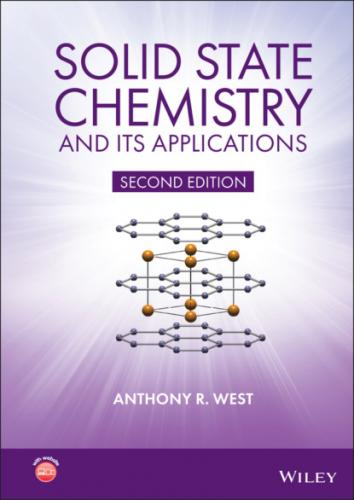6 Chapter 6Figure 6.1 (a) Simplified ray diagram for an optical microscope. (b) Basic c...Figure 6.2 (a) The transmission of light along an optical fibre and (b) esca...Figure 6.3 Simplified ray diagram for an electron microscope showing diffrac...Figure 6.4 Working ranges of various techniques used for viewing solids. TEM...Figure 6.5 Some of the processes that occur on bombarding a sample with elec...Figure 6.6 Basic components of an electron microscope. Figure 6.7 Reflection and transmission signals in SEM and TEM modes Figure 6.8 Principle of the scanning electron microscope. Figure 6.9 Penetration and escape depths in SEM. Figure 6.10 Processes responsible for Auger electron emission. Figure 6.11 Auger spectra of (Pb0.4Sr0.6)TiO3/SiO2/Si layered structure afte...Figure 6.12 Cathodoluminescence: (a) excitation across the band gap; (b) rad...Figure 6.13 (a) Normalised CL spectra for undoped AlN and AlN doped with 0.2...Figure 6.14 High‐resolution electron micrograph of an intergrowth tungsten b...Figure 6.15 (a) TEM bright field micrograph of an ilmenite (Ilm) sample cont...Figure 6.16 Atomic resolution HAADF‐STEM image of Al72Ni20Co8 along the 10‐f...Figure 6.17 Schematic illustration of atomic resolution imaging and analysis...Figure 6.18 Principal regions of the electromagnetic spectrum and the associ...Figure 6.19 (a) Energy level transitions involved in IR and Raman spectrosco...Figure 6.20 IR spectra of (a) calcite, CaCO3, (b) NaNO3 and (c) gypsum, CaSO...Figure 6.21 Laser Raman spectra of (a) quartz and (b) cristobalite. Figure 6.22 Possible electronic transitions in a solid. These involve electr...Figure 6.23 Schematic of a typical UV/visible absorption spectrum. Figure 6.24 (a) The four mI states for a nucleus with spin I = 3/2 (i) in th...Figure 6.25 29Si NMR spectrum of xonotlite. Also shown schematically is t...Figure 6.26 Schematic 29Si NMR spectra of silicates containing different Q4 ...Figure 6.27 (a) Schematic ESR absorption peak, (b) the first derivative of t...Figure 6.28 (a) Flowsheet showing relations between various diffraction, mic...Figure 6.29 Al Kβ emission spectra of three Al‐containing materials....Figure 6.30 Variation of X‐ray absorption coefficient with wavelength for Cu...Figure 6.31 AEFS spectra of CuCl and CuCl2·2H2O. Figure 6.32 EXAFS spectrum of Cu. Figure 6.33 EXAFS‐derived partial RDFs for an amorphous Cu46Zr54 alloy: (a) ...Figure 6.34 Origins of ESCA and Auger spectra. Figure 6.35 Schematic XPS and AES spectra of Na+ in a sodium‐containing soli...Figure 6.36 Schematic XPS 2p spectra of Na2S2O3 and Na2SO4. Each peak is a d...Figure 6.37 XPS spectrum of Cr 3s, 3p electrons in KCr3O8. Figure 6.38 XPS spectra for tungsten bronzes. Figure 6.39 (a) The Mössbauer effect. The energy of the γ‐rays is modified w...Figure 6.40 Chemical shifts in Fe‐containing compounds and minerals. ...Figure 6.41 Mössbauer spectrum of KFeS2 (a) quadrupole splitting above and (...Figure 6.42 Schematic TG curve for a single‐step decomposition reaction....Figure 6.43 Decomposition of CaCO3 in different atmospheres. Figure 6.44 The DTA method. Graph (b) results from the set‐up shown in (a) a...Figure 6.45 Schematic TG and DTA curves for kaolin minerals. Curves vary dep...Figure 6.46 Some schematic reversible and irreversible changes: (a) dehydrat...Figure 6.47 Schematic DTA curves showing melting of crystals on heating and ...Figure 6.48 Use of DTA for phase diagram determination: (a) a simple binary ...Figure 6.49 Schematic, stepwise decomposition of calcium oxalate hydrate by ...
7 Chapter 7Figure 7.1 Binary join CaO–SiO2 in the ternary system Ca–Si–O. Note the meth...Figure 7.2 Schematic diagram showing stable, unstable and metastable conditi...Figure 7.3 Schematic P versus T phase diagram of a one‐component system....Figure 7.4 The system H2O. Figure 7.5 The system SiO2. Figure 7.6 Simple eutectic binary system. Figure 7.7 Principle of moments. Figure 7.8 Binary systems showing a compound AB melting congruently (a) and ...Figure 7.9 Binary system showing compound AB with (a) an upper limit of stab...Figure 7.10 Binary system with a complete range of solid solutions. Figure 7.11 The plagioclase feldspar system, anorthite–albite. Figure 7.12 Binary solid solution systems with (a) thermal minima and (b) th...Figure 7.13 Simple eutectic system showing partial solid solubility of the e...Figure 7.14 The system Mg2SiO4‐Zn2SiO4. Figure 7.15 Binary system with partial solid solution formation. Figure 7.16 Binary system with incongruently melting compound and partial so...Figure 7.17 Simple eutectic system with solid–solid phase transitions. Figure 7.18 Binary solid solution systems with polymorphic phase transitions...Figure 7.19 Binary eutectic system with polymorphic transitions and partial ...Figure 7.20 Liquid immiscibility domes in phase diagrams. Figure 7.21 MgO–SiO2 phase diagram. Figure 7.22 The Fe–C diagram. Figure 7.23 Partial diagram for lime‐rich compositions in the system CaO–SiO...Figure 7.24 Na–S phase diagram and open‐circuit cell voltage as a function o...Figure 7.25 Na2O–SiO2 phase diagram. N = Na2O, S = SiO2, N2S = Na4SiO4, NS =...Figure 7.26 Li2SiO3–SiO2 phase diagram. LS = Li2SiO3, LS2 = Li2Si2O5. The ex...Figure 7.27 Purification of Si by zone refining: impurities concentrate in t...Figure 7.28 ZrO2–Y2O3 phase diagram. M, T and C refer to the monoclinic, tet...Figure 7.29 Bi2O3–Fe2O3 phase diagram. Figure 7.30 Summary of the changes that can occur in a single‐phase material...Figure 7.31 Triangular grid or composition triangle used to represent the co...Figure 7.32 Two possible arrangements of compatibility triangles in a simple...Figure 7.33 Ternary systems containing ranges of binary solid solutions. Num...Figure 7.34 Possible doping mechanisms with charge compensation and solid so...Figure 7.35 Ternary phase diagrams to represent BaTiO3 which has lost some o...Figure 7.36 Representation
